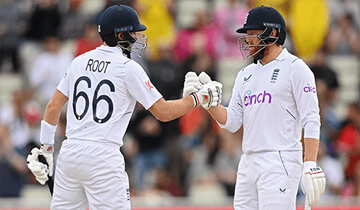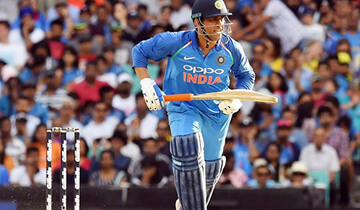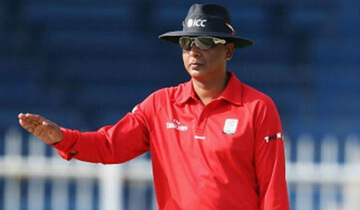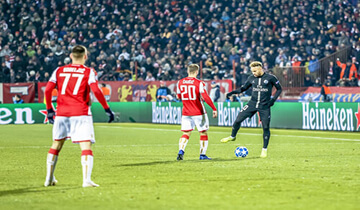Rugby union is a popular full-contact team sport played around the world. Unlike many other sports, rugby union has 15 players on each team, comprising forwards and backs with specialized roles. This diversity of positions provides an opportunity for athletes of different sizes, speeds, and skillsets to excel.
Forwards vs Backs
The 8 forwards on each team are the larger players, valued for their strength, power and aggression. The main roles for the forwards are to gain possession of the ball through scrums, rucks and mauls, and provide a platform for the backs to attack. Key forward positions include:
- Prop - The front row players who anchor the scrum using their brute strength.
- Hooker - The player in the middle of the front row who “hooks” the ball back with their feet.
- Locks - The tallest players who jump to win lineout throws.
In contrast, the 7 backs are leaner and valued for their speed, evasiveness and kicking skills. The backs’ role is to exploit gaps in the defense and score tries. Backs positions include:
- Fly-half - The playmaker who dictates strategy and kick for territory.
- Centers - Use their speed and power to break the defensive line.
- Wingers - The fastest players who score tries by running around the edges.
The diverse positional requirements in rugby union enable athletes of all sizes and abilities to play. The synergy between the brute force of the forwards and the guile of the backs makes rugby an exciting game for participants and spectators alike. With multiple ways to contribute on the field, rugby has an almost universal appeal.
In addition to the players’ roles and responsibilities, another vital aspect that piques the curiosity of newcomers is, “how long is a rugby game?” A standard rugby game consists of two halves, each lasting for 40 minutes, making a total of 80 minutes of playing time.
Forwards
The forwards make up the ’engine room’ of a rugby team. They are generally bigger and stronger than the backs and specialise in gaining and retaining possession from scrums and lineouts. The forwards are split into two main groups - the front row and the second row.
Front Row (Numbers 1, 2, 3)
The front row is crucial for a team’s set piece and scrummaging. It consists of:
-
Prop - Number 1 and 3: The two props brace against each other and provide the power and stability in the scrum. They are very strong and stocky. A tighthead prop packs down on the right (number 3) and is usually the more powerful scrummager, while the loosehead prop packs down on the left (number 1).
-
Hooker - Number 2: The hooker packs down in the middle of the front row. Their main role is to ‘hook’ or strike for the ball with their foot to win possession back for their team from the scrum. The hooker is also usually responsible for throwing the ball into the lineout.
Props - Strong and stable scrummaging
The props are key to providing a solid foundation to the scrum. They need to be immensely strong, particularly in the upper body, core and neck to withstand the drives from the opposition packs. Good scrummaging technique and mobility are also important.
In open play, props will make short crash runs close to the ruck area and tackle aggressively. They have high work rates around the park. The loosehead prop can sometimes also function as an extra flanker at the breakdown.
Hooker - Throw into lineouts, win possession in scrums
The hooker has two main roles on the pitch:
-
Throwing the ball into the lineout. This requires good technique and consistency to hit their jumpers and win clean lineout ball.
-
Striking for the ball with their foot in the scrum. The hooker needs to be able to read the opposition scrum and time their strike well to win their team possession.
In open play, the hooker operates like a fourth loose forward. They need to be mobile and skilled at the breakdown and tackle area. Good fitness is required to cover the whole pitch.
Locks/Second Rows (Numbers 4, 5)
The locks or second rows operate in the engine room behind the front row. Key roles include:
-
Contesting and winning opposition lineout ball. They are usually the primary jumpers. Significant height and good jumping technique are required.
-
Providing power and momentum in the scrum drive through the locks. Good scrummaging technique is important.
-
General mobility around the park and skill at mauls, rucks and tackles. Second rowers are expansive in their play.
Win lineout possession, engine of the scrum
The primary role of the locks is to win quality lineout ball for their team, both from their own throw and disrupting opposition ball. Their height and jumping ability are crucial assets here.
In the scrum, the locks bind together in the second row and provide driving power through the channel between the front rows. They need to stay balanced, low and take the weight of the prop’s drive. Good body position and scrummaging technique are key.
The locks act as the engine room of the pack across the game. They make many tackles, hit rucks and provide drive in mauls. Conditioning, strength and mobility are important to cover the demands of the role.
Back Row (Numbers 6, 7, 8)
The back row provides the ’loose forwards’ in a team. They operate in more open space across the park. The back row consists of:
-
Flankers - Number 6 and 7: The two flankers operate on the ’edges’ of the scrum and have roles at the tackle area and breakdown. They are often the most mobile and skillful forwards.
-
Number 8: The number 8 packs down between the locks at the back of the scrum. A key link player between the forwards and backs.
Flankers - All-rounders good at breakdowns
The two flankers have similar roles on either side of the scrum and breakdown area. Key skills include:
-
Contesting and slowing down opposition ball at the tackle and breakdown. Good ground positioning and strength over the ball are important.
-
Quickly getting to breakdowns to support their team and maintain momentum in attack. High work rate and fitness is required.
-
Making tackles and turnovers to win back possession. Flankers are often the top tacklers in a team.
-
Making runs and supporting play in wider channels. Flankers need to be skillful and mobile unit.
-
Calling lineouts with the locks and making aerial claims.
The openside flanker (no.7) specialises more in slowing down opposition ball at the breakdown, while the blindside flanker (no.6) focuses more on running and tackling. But both operate as complete loose forwards.
Number 8 - Link between forwards and backs
The number 8 must take on both some of the gritty duties of the forwards combined with linking and playmaking skills. Key responsibilities include:
-
Winning clean possession from the base of the scrum. Number 8’s need good strength over the ball and pick up technique.
-
Carrying the ball powerfully into contact and making yards upfield. The ability to offload and keep the ball alive for teammates is also important in attack.
-
Operating as a playmaker and passing link at first receiver in attack. Good handling skills and vision to put others into space is crucial.
-
Providing a defensive organiser role and making spot tackles around fringes of rucks.
Number 8 requires a balance of power and pace. Good handling ability and running lines can see top number 8’s among the top try scorers.
Backs
The backs make up the faster, more agile players in a rugby team. Their roles involve creating opportunities to advance the ball up the field and score tries. The backs consist of several positions.
Halfbacks (Numbers 9, 10)
The halfbacks are the scrumhalf and flyhalf. They link the forwards to the rest of the backs.
Scrumhalf
The scrumhalf is the link between the forwards and the backs. They retrieve the ball from the scrum, rucks and mauls and pass it out to the flyhalf and other backs. The scrumhalf acts as a distributor, getting the ball to the players who can make best use of it. They need to be agile, have a good pass, be able to read the game well and communicate effectively with teammates. A good scrumhalf is instrumental in providing clean, quick ball for the backs to work their magic.
Flyhalf
The flyhalf is the chief playmaker and tactical kicker of the team. They receive the ball from the scrumhalf and decide where to distribute it - whether that’s passing along the backline, kicking for territory, or kicking for touch. The flyhalf needs excellent decision-making, passing and kicking skills. They need to be able to assess situations quickly and execute the right option. The flyhalf starts the team’s attacks and through their creativity, vision and skill can create openings in the opposition’s defence. The flyhalf is also usually the place kicker, responsible for conversions, penalties and drop goals. A talented flyhalf is a huge asset to any rugby side.
Centers (Numbers 12, 13)
The centers - inside and outside - comprise the midfield. They are powerful, creative players who can split defences with their pace and running.
Inside Center
The inside center is physically strong and aggressive. They will take the ball up the middle of the field, bursting through gaps close to the ruck. The inside center needs to be an intelligent runner with excellent awareness of space. Their power and direct running can bust open defences and create opportunities for players outside them. The inside center also acts as a second receiver, taking passes from the flyhalf and distributing the ball wider. A solid inside center provides go-forward ball for the team.
Outside Center
The outside center complements their inside partner. They tend to be faster and excel at moving the ball into space. The outside center is there to be put into gaps and use their pace to advance upfield. They also need excellent distributing skills to get the ball to the deadly wings. The combination of inside power and outside creativity offered by the two centers is crucial in midfield. The outside center also covers for kicks, requiring awareness and agility. Overall, the centers enable the team to gain territory through the middle of the field.
Wings (Numbers 11, 14)
The wings, also called wingers, lurk out wide on the edges of the field. Their main roles are to finish off attacks and score tries.
Wings need to be incredibly fast and elusive. Their pace allows them to expose gaps in the defence and evade attempted tackles. Once in space, wings can kick on the afterburners and devastate teams. Wings are typically the leading try scorers in a team. They have excellent finishing skills to dive over the line and dot the ball down under pressure. Wings also use their speed to chase down kicks and prevent the ball from going out of play. Overall, these lightning-quick players provide the cutting edge to slice through defences and convert attacking opportunities into points.
Fullback (Number 15)
The fullback is the last line of defence and starts counterattacks. They field deep opposition kicks, requiring courage and skill under the high ball. Strong kicking is also vital for the fullback to clear their lines and launch counterattacks. Their positioning allows them to join the backline as an extra attacker. The fullback needs pace and vision to inject themselves into the attacking line. They can also cover for chips over the defensive line. Overall, a solid fullback provides a reliable last line of defence and starts threatening counterattacks. Their well-rounded skills provide security at the back.
Conclusion
Rugby union features an expansive cast of 15 positions that each play a vital role in the team’s performance. The diverse responsibilities and skillsets across the positions are what make rugby such an inclusive and multifaceted sport.
The larger, stronger forwards dominate possession at scrummages, ruck mauls and lineouts. Props and locks provide stability and power, while hookers strike for the ball. The loose forwards excel in open play with aggressive runs, tackles and competency at the breakdown. Number 8s link the forwards and backs. This tight five unit operates as the engine room, winning and retaining possession.
In contrast, the leaner, faster backs exploit any opportunities to advance upfield. Halfbacks begin attacking movements, centers combine physicality and flair through the midfield, and wingers provide deadly finishing touches out wide. Fullbacks offer security from counterattacks. The backs use their vision, creativity, pace and evasiveness to breach defenses and ultimately score points.
The synergy between the brute force of the forwards and the guile of the backs underpins the appeal of rugby union. With diverse gameplay across the park, players of all sizes and abilities can find a position that suits their strengths. Rugby’s inclusive nature and reliance on cohesion makes it a special team sport. Every position depends on their teammates to function as a cohesive unit. With exhilarating play and universal appeal, rugby union continues to grow as a cherished sport globally.







































